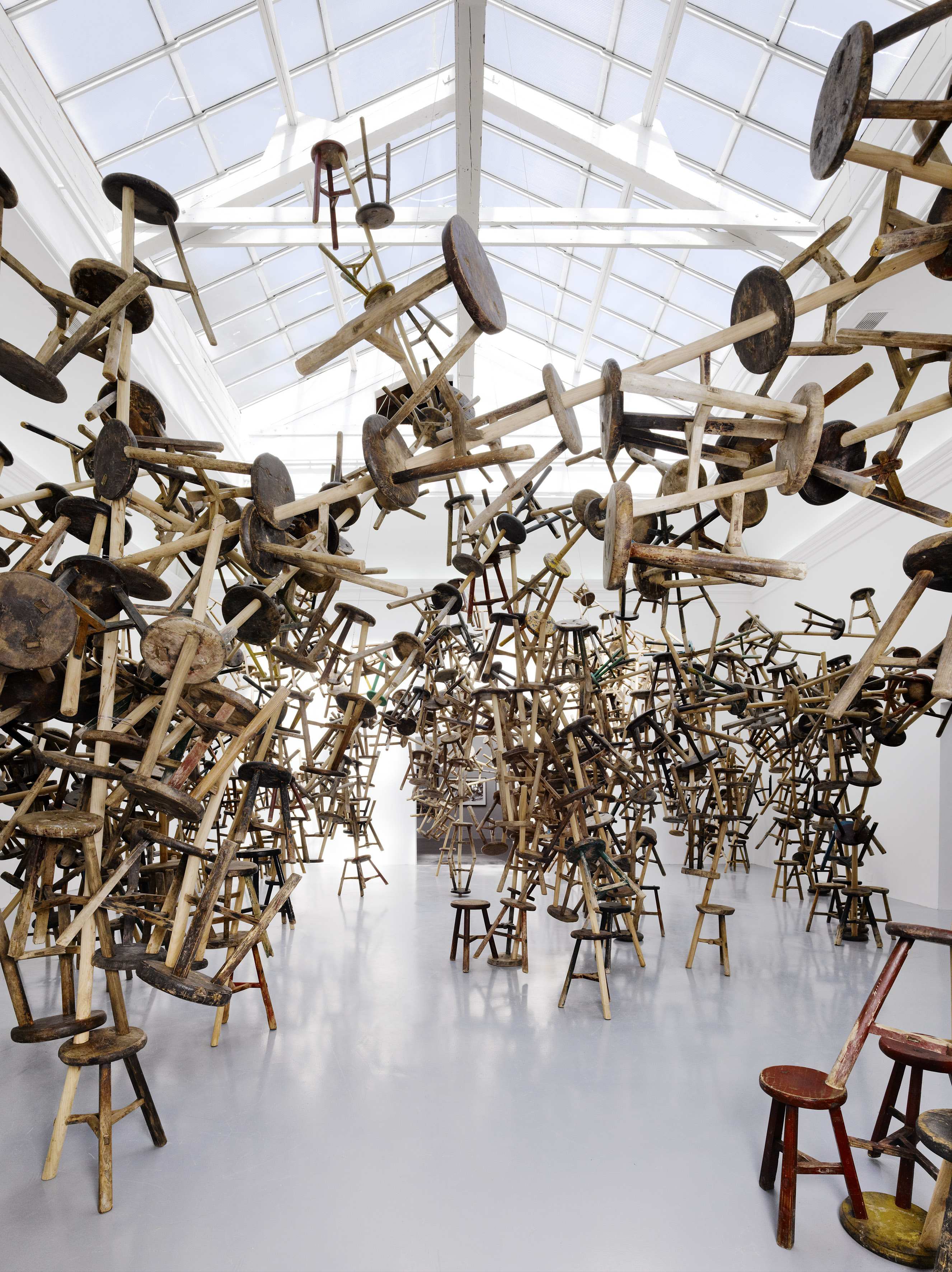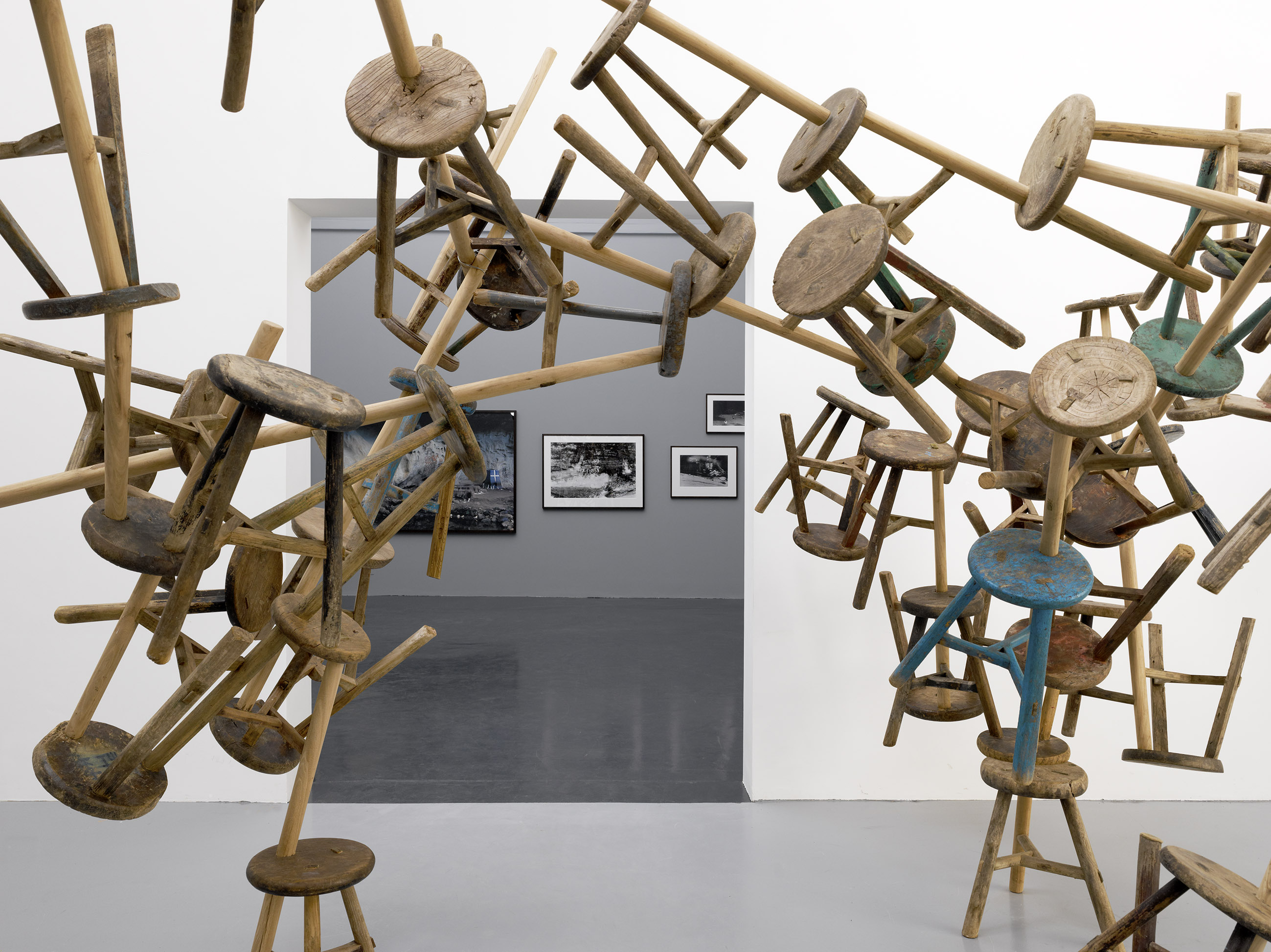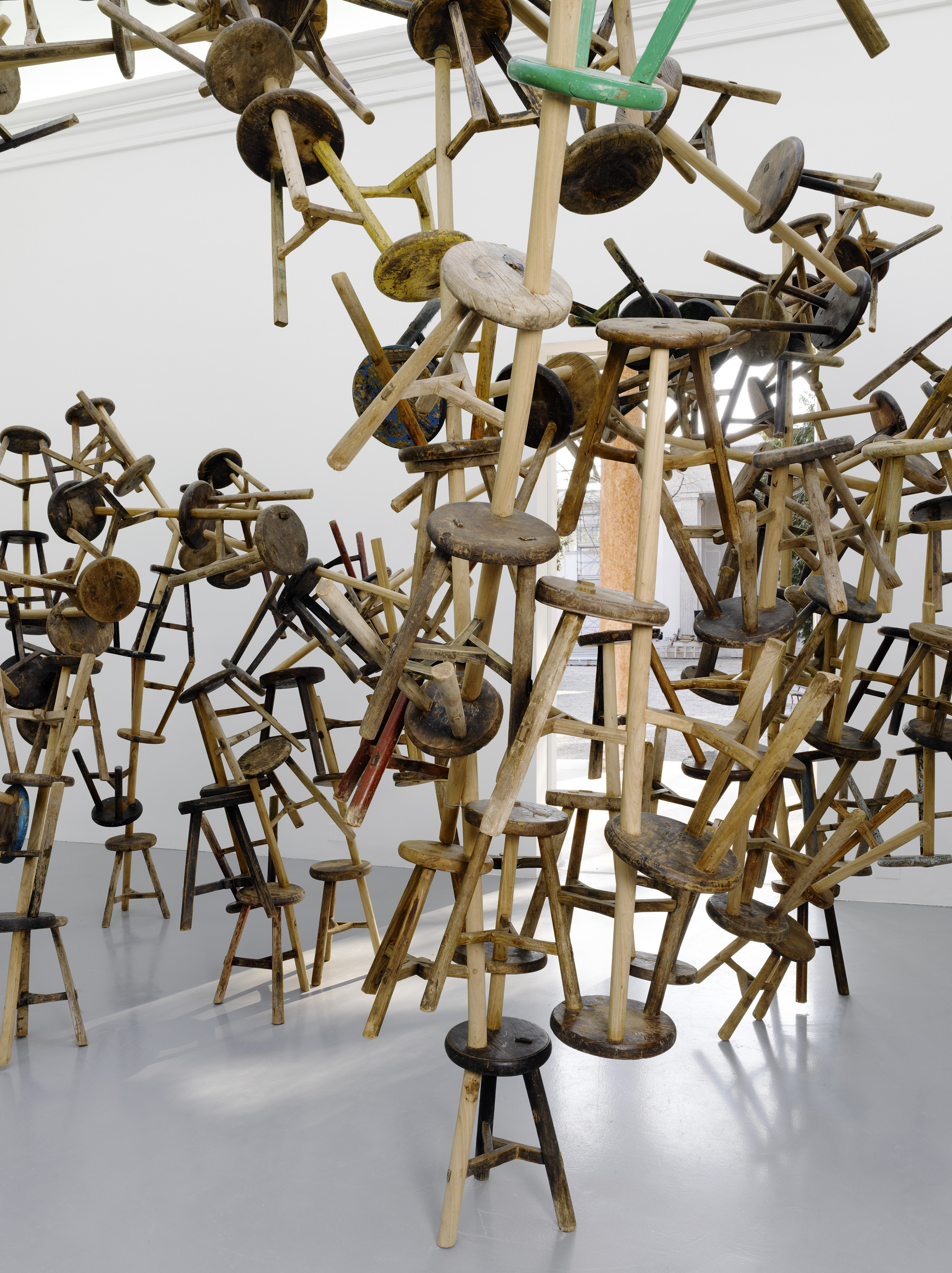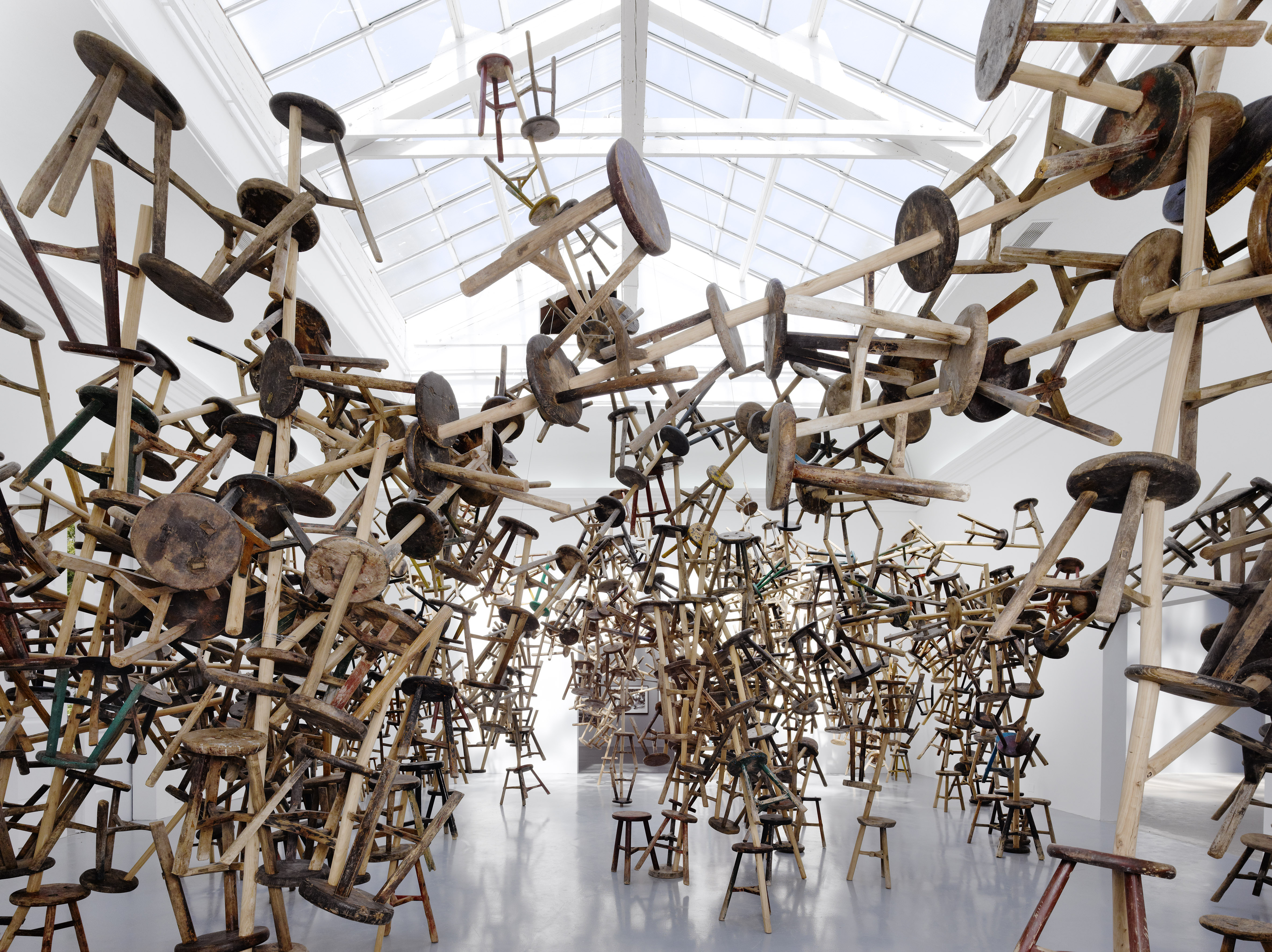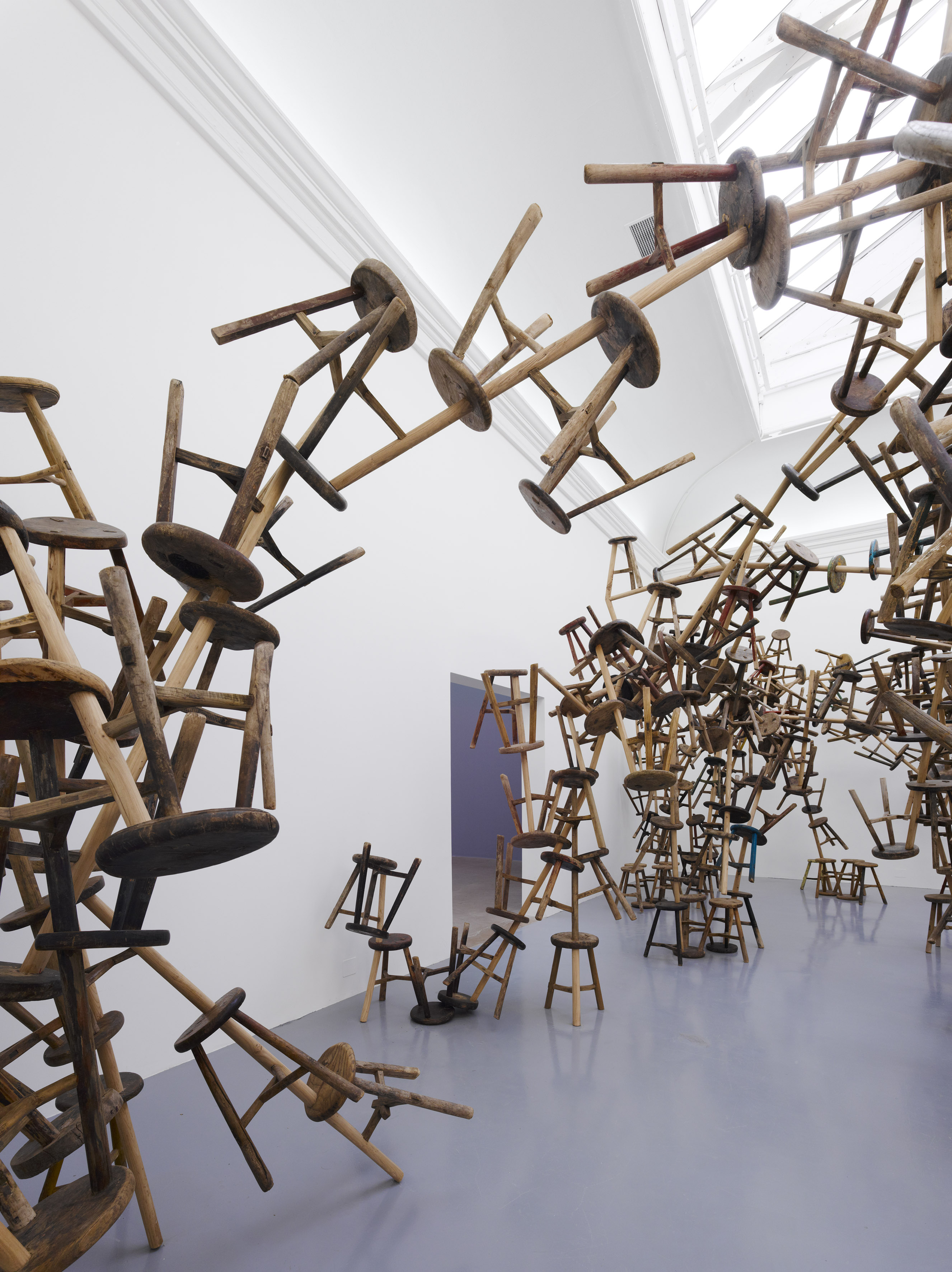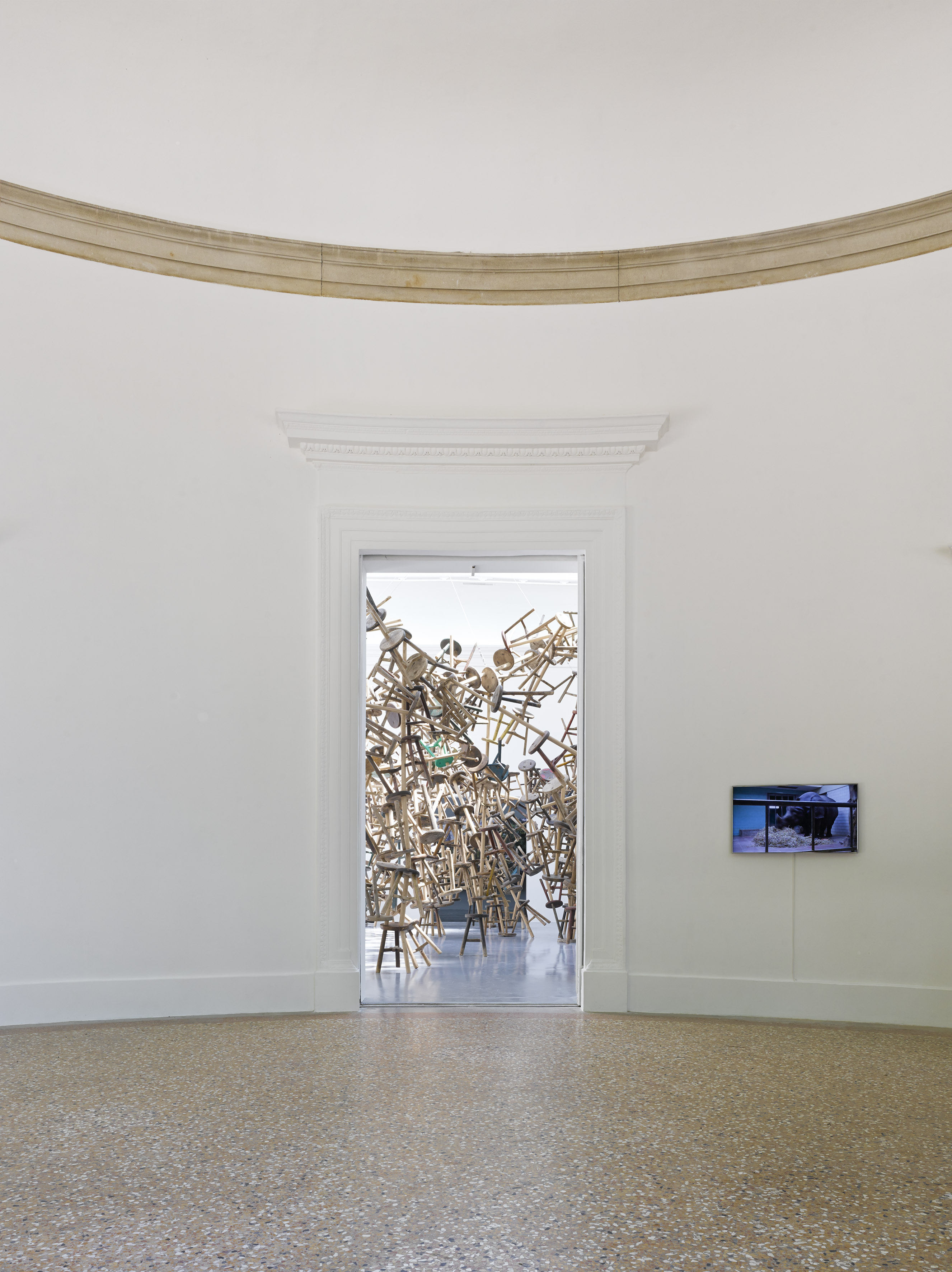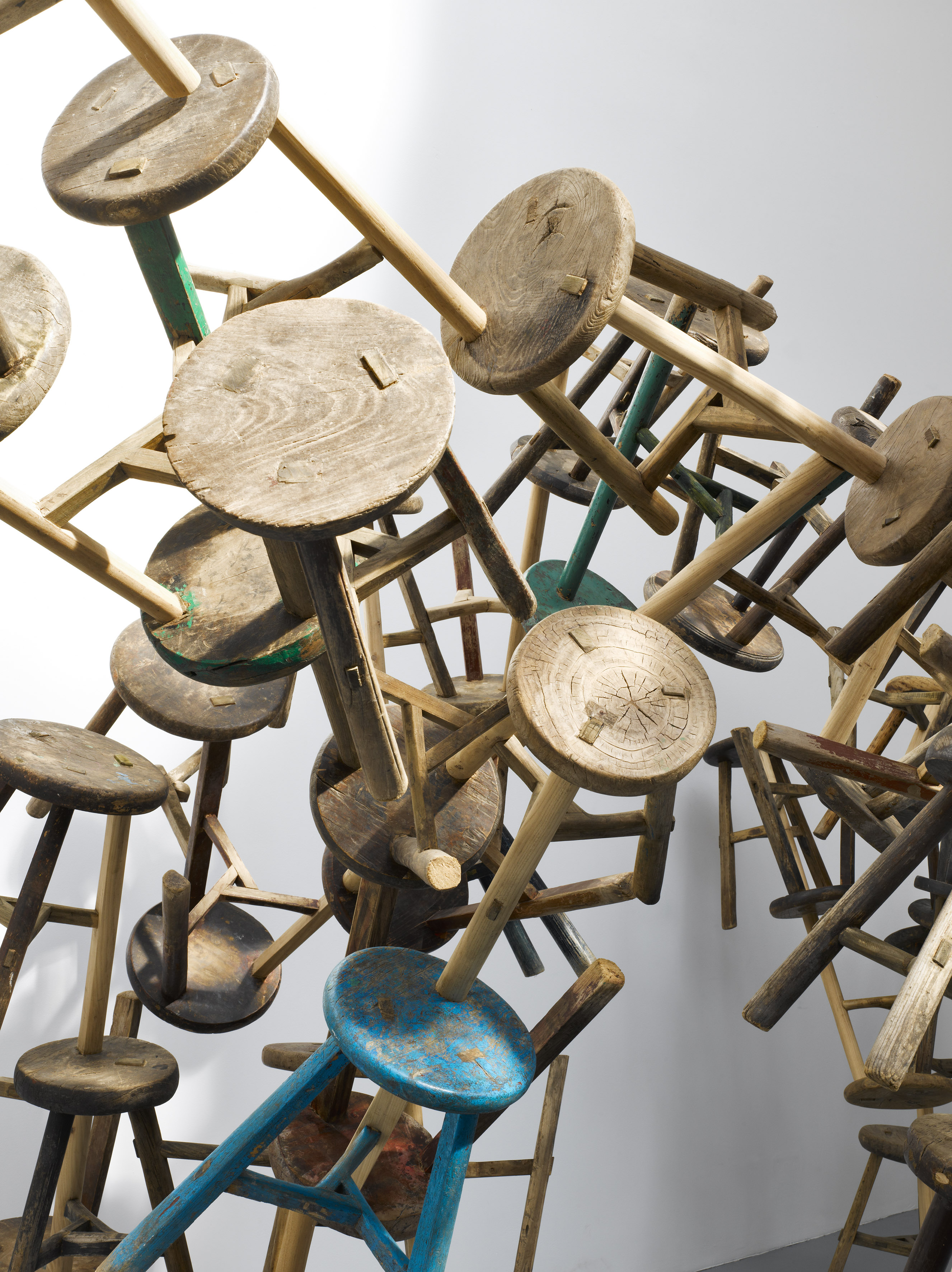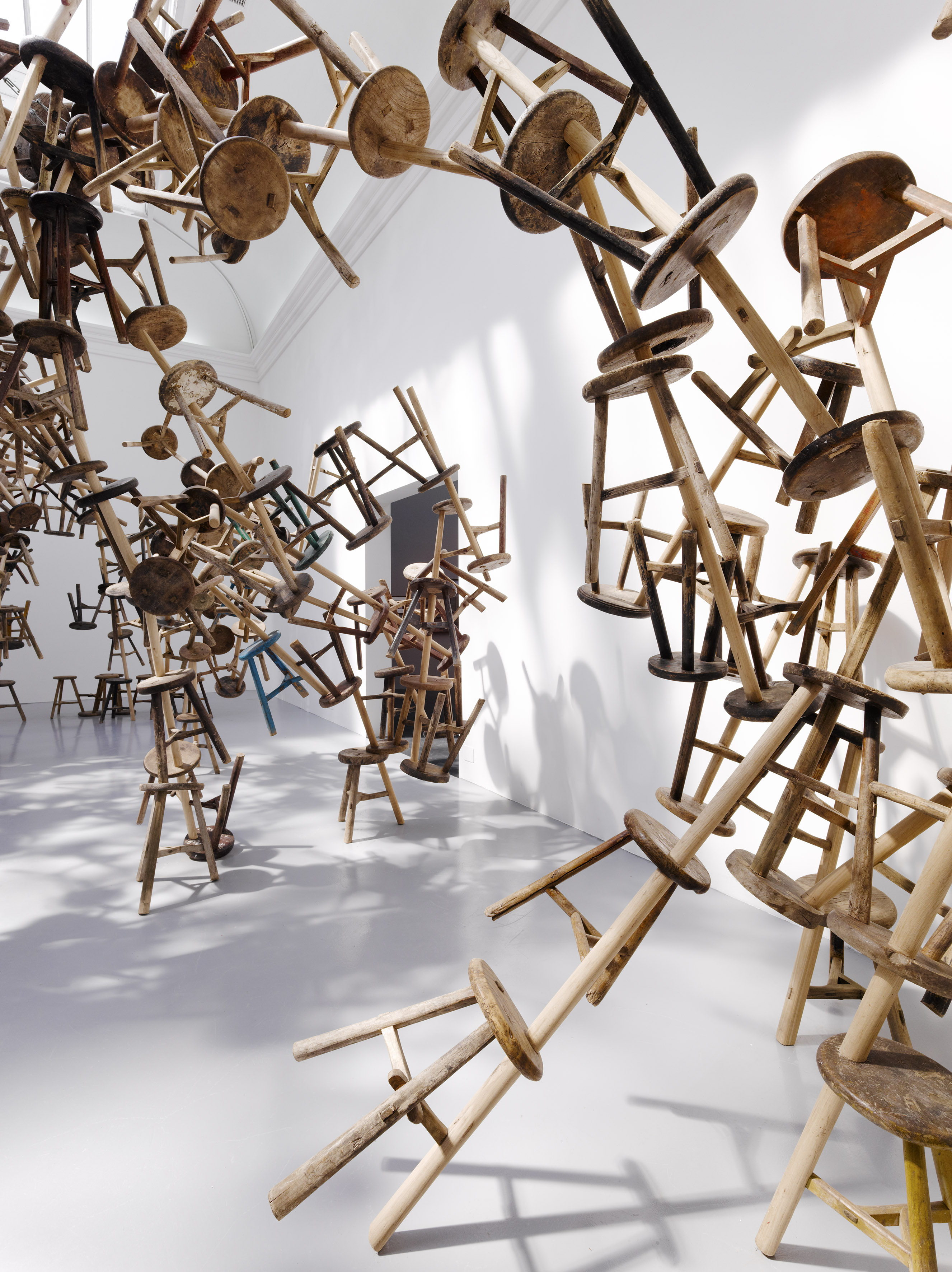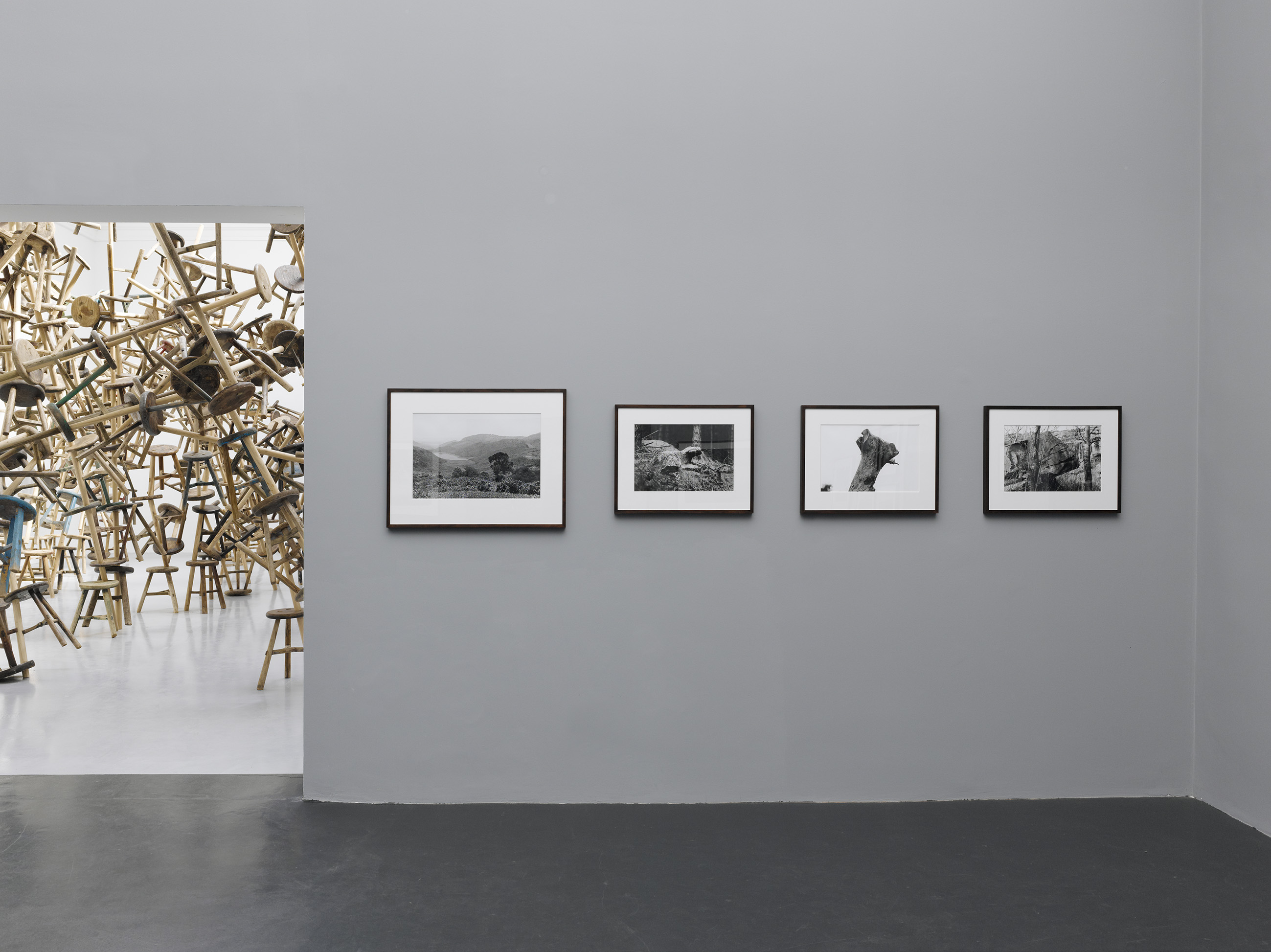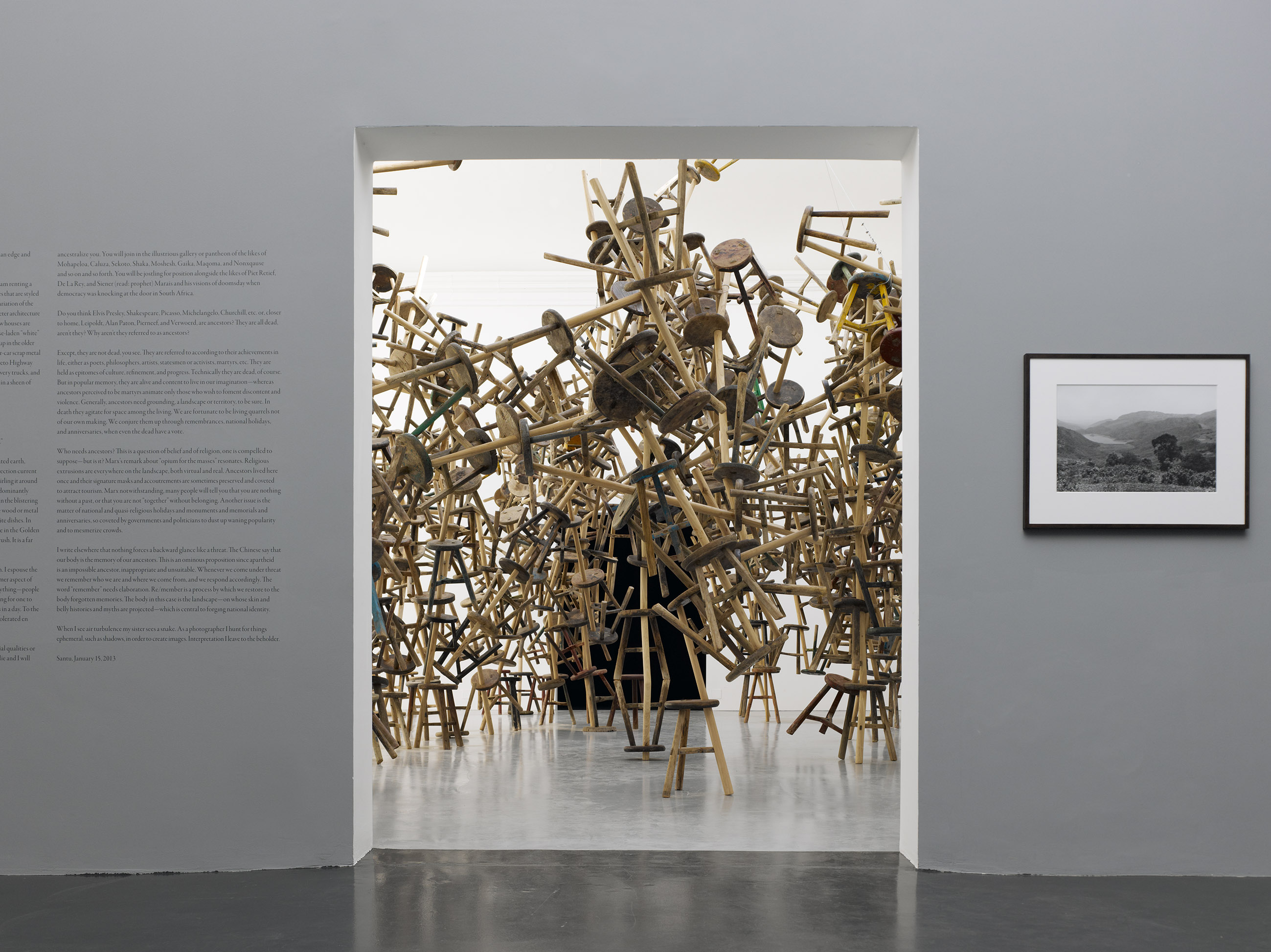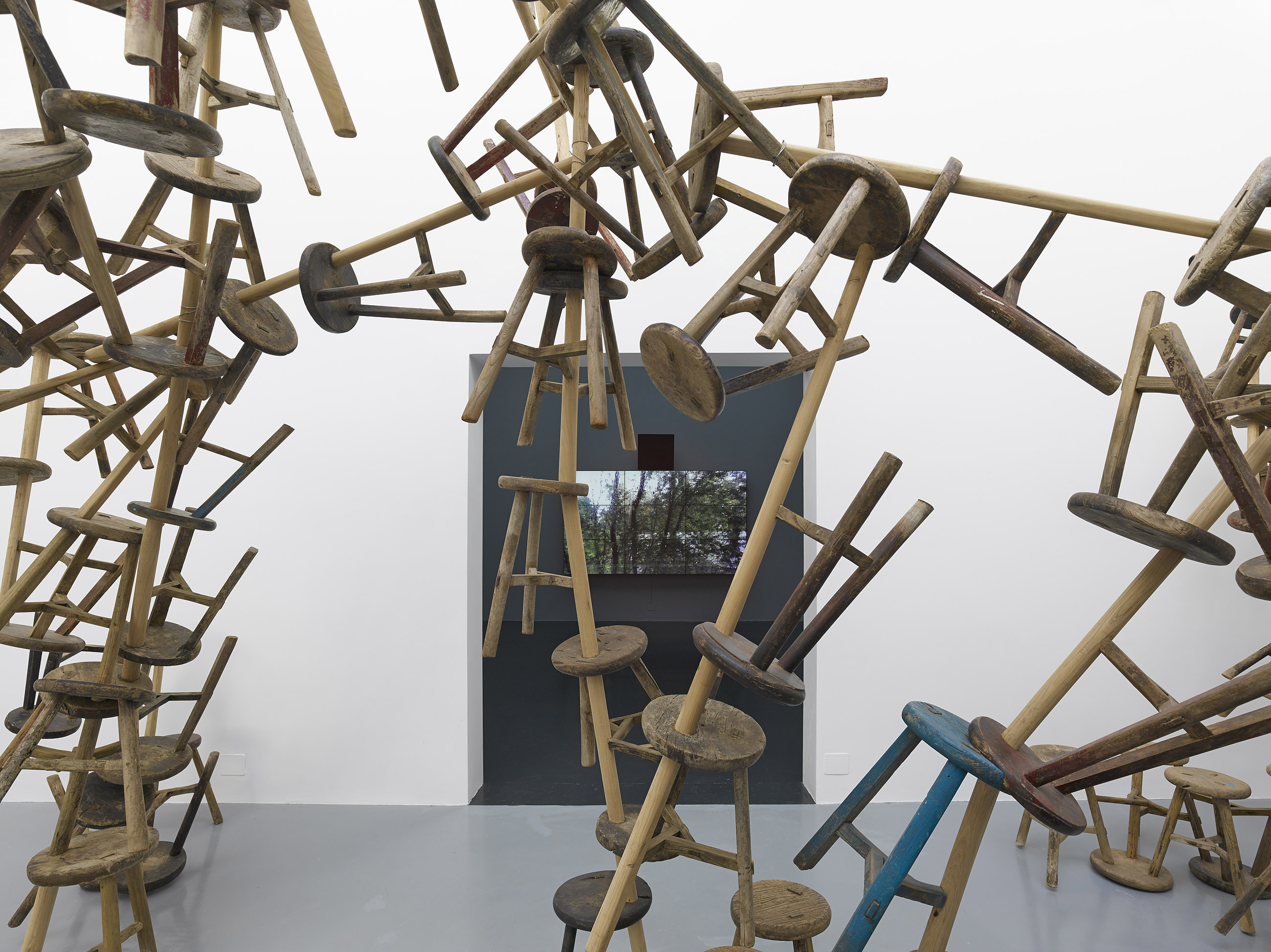Ai Weiwei has installed 886 three-legged wooden stools in the German pavilion for the Venice Art Biennale this year.
In fact, the German and French pavilions have traded locations for the first time this year, so the works of Anri Sala, chosen to represent France, are on display in the German pavilion, while Germany has selected four artists, Ai Weiwei, Romuald Karmakar, Santu Mofokeng, and Dayanita Singh, to show their work in the French pavilion.
In today’s China, the three-legged stool, manufactured by a uniform method and used throughout China in all sectors of society, is considered somewhat of an antique. Every family had at least one stool, which passed on from generation to generation. However, after the Cultural Revolution production of these stools plummeted and aluminium and plastic have superseded more traditional wood. Ai Weiwei sought out traditional craftsmen to create the 886 stools, and formed a structure out of them which sprawls through the various rooms of the pavilion.
Susanne Gaensheimer, curator of the German pavilion said: “The single stool as part of an encompassing sculptural structure may be read as a metaphor for the individual and its relation to an overarching and excessive system in a postmodern world developing at lightning speed.
“In the present exhibition, it functions also as a metaphor of the themes addressed in the works of Romuald Karmakar, Santu Mofokeng, and Dayanita Singh, each of whom has devised distinctive techniques to present a variety of perspectives on how biographical, cultural, or political identity is related to larger, transnational conditions and circumstances.”
Images: © Roman Mensing, artdoc.de in cooperation with Thorsten Arendt


